
This video segment, adapted from ZOOM, demonstrates how to use a drinking straw and a bottle full of water to make low- and high-pitched sounds. [1:11]
- Subject:
- Science
- Material Type:
- Audio/Video
- Provider:
- PBS LearningMedia
- Date Added:
- 12/01/2022

This video segment, adapted from ZOOM, demonstrates how to use a drinking straw and a bottle full of water to make low- and high-pitched sounds. [1:11]
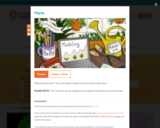
What do plants eat? This unit explores plants and how they make food.

Emergency drills (fire drills especially) can be terrifying for preschoolers. It's loud, interruptive, and there can be kids everywhere! This site includes examples of read-aloud books and drill routine posters you can adapt to your classroom to make these drills less scary.

Building on their understanding of graphs, students are introduced to random processes on networks. They walk through an illustrative example to see how a random process can be used to represent the spread of an infectious disease, such as the flu, on a social network of students. This demonstrates how scientists and engineers use mathematics to model and simulate random processes on complex networks. Topics covered include random processes and modeling disease spread, specifically the SIR (susceptible, infectious, resistant) model.
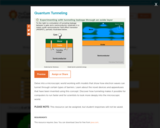
Delve into a microscopic world working with models that show how electron waves can tunnel through certain types of barriers. Learn about the novel devices and apparatuses that have been invented using this concept. Discover how tunneling makes it possible for computers to run faster and for scientists to look more deeply into the microscopic world.
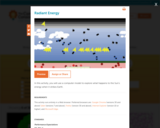
How does energy flow in and out of our atmosphere? Explore how solar and infrared radiation enters and exits the atmosphere with an interactive model. Control the amounts of carbon dioxide and clouds present in the model and learn how these factors can influence global temperature. Record results using snapshots of the model in the virtual lab notebook where you can annotate your observations.
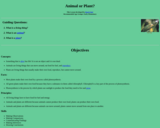
This site provides a basic lesson plan from Reach Out! Michigan comparing plants to animals.
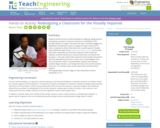
Students practice human-centered design by imagining, designing and prototyping a product to improve classroom accessibility for the visually impaired. To begin, they wear low-vision simulation goggles (or blindfolds) and walk with canes to navigate through a classroom in order to experience what it feels like to be visually impaired. Student teams follow the steps of the engineering design process to formulate their ideas, draw them by hand and using free, online Tinkercad software, and then 3D-print (or construct with foam core board and hot glue) a 1:20-scale model of the classroom that includes the product idea and selected furniture items. Teams use a morphological chart and an evaluation matrix to quantitatively compare and evaluate possible design solutions, narrowing their ideas into one final solution to pursue. To conclude, teams make posters that summarize their projects.

Given a hypothetical civil engineering scenario, student pairs are tasked to apply their knowledge of the rock cycle, rock types, rock weathering and the engineering design process to model a potential method to create a sandy beach from three rocky island shorelines. For their abrasion weathering models, they use wide-mouth lidded jars and three types of candies that serve as the testing “rocks.” They simulate both low- and high-energy weathering environments. After completing the simple weathering techniques and analyzing their observations of the results, they conclude by recommending to the island developer which rocky shoreline would be the easiest, simplest, and most cost-effective from which to create a sandy beach. A worksheet and pre/post quiz are provided.
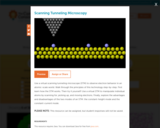
Use a virtual scanning tunneling microscope (STM) to observe electron behavior in an atomic-scale world. Walk through the principles of this technology step-by-step. First learn how the STM works. Then try it yourself! Use a virtual STM to manipulate individual atoms by scanning for, picking up, and moving electrons. Finally, explore the advantages and disadvantages of the two modes of an STM: the constant-height mode and the constant-current mode.
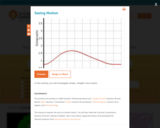
Explore your own straight-line motion using a motion sensor to generate distance versus time graphs of your own motion. Learn how changes in speed and direction affect the graph, and gain an understanding of how motion can be represented on a graph.
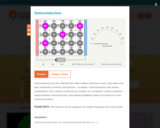
Semiconductors are the materials that make modern electronics work. Learn about the basic properties of intrinsic and extrinsic or 'doped' semiconductors with several visualizations. Turn a silicon crystal into an insulator or a conductor, create a depletion region between semiconductors, and explore probability waves of an electron in this interactive activity.
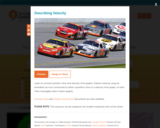
This web-based graphing activity explores the similarities and differences between Velocity vs. Time and Position vs. Time graphs. It interactively accepts user inputs in creating "prediction graphs", then provides real-time animations of the process being analyzed. Learners will annotate graphs to explain changes in motion, respond to question sets, and analyze why the two types of graphs appear as they do. It is appropriate for secondary physical science courses, and may also be used for remediation in preparatory high school physics courses. This item is part of the Concord Consortium, a nonprofit research and development organization dedicated to transforming education through technology. Users must register to access full functionality of all the tools available with SmartGraphs.

Doug Eldon performs this great song which tells about the different biomes and their characteristics. Great way to begin your unit on the biomes.
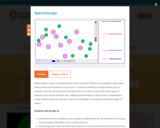
What happens when an excited atom emits a photon? What can we deduce about that atom based on the photons it can emit? A series of interactive models allows you to examine how the energy levels the electrons of an atom occupy affect the types of photons that can be emitted. Use a digital spectrometer to record which wavelengths certain atoms will emit, and then use this knowledge to compare and identify types of atoms. Students will be abe to:
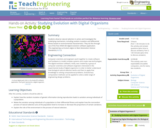
Students observe natural selection in action and investigate the underlying mechanism, including random mutation and differential fitness based on environmental characteristics. They do this through use of the free AVIDA-ED digital evolution software application.
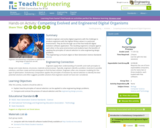
Students engineer and evolve digital organisms with the challenge to produce organisms with the highest fitness values in a particular environment. They do this through use of the free Avida-ED digital evolution software application. The resulting organisms compete against each other in the same environment and students learn the benefits of applying the principles of natural selection to solve engineering design problems.

This site has a cute game young students will enjoy playing to review letter recognition. Students "go fishing" for letters. For each letter they "catch" they must tell what the letter is and a sound it makes.

A resourceful site explaining, chronicling, and detailing the idea of students' monitoring their own comprehension of a task or understanding. Includes a video link, quotes from experts, links, and more.
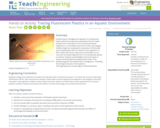
Student teams investigate the migration of small-particle plastic pollution by exposing invertebrates found in water samples from a local lake or river to fluorescent bead fragments in a controlled environment of their own designs. Students begin by reviewing the composition of food webs and considering the ethics of studies on live organisms. In their model microcosms, they set up a food web so as to trace the microbead migration from one invertebrate species to another. Students use blacklights and microscopes to observe and quantify their experimental results. They develop diagrams that explain their investigations—modeling the ecological impacts of microplastics.